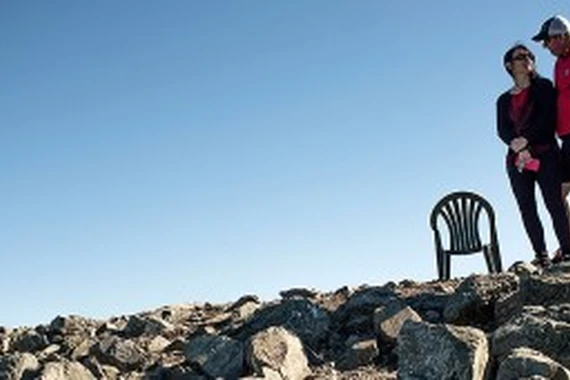
It is summertime where I live, and that means a lot of fun in the sun for adults and children alike. It also means remembering sun safety for yourself, encouraging it for others, and being vigilant about checking your skin for any abnormalities. It is a LOT easier to beat Stage IV melanoma by detecting it early.
First, the detection part. Getting screened for skin cancer is among the easiest tests you’ll ever undergo; it’s simply a visual inspection of your skin by a medical professional. It is equally important to self-monitor for abnormal skin lesions that could potentially lead to something worse. Keeping an eye on your skin – or someone else’s – can save you or them from skin cancer, or catch the disease before it worsens. And it is as simple as doing your ABCs…or ABCDEs.
Per the Melanoma Research Foundation’s website, here are the ABCDEs of melanoma:1
- A - Asymmetrical shape
Melanoma lesions are often irregular, or not symmetrical, in shape.
- B - Border
Melanoma lesions usually have irregular borders that are difficult to define.
- C - Color
The presence of more than one color (blue, black, brown, tan, etc.) or the uneven distribution of color can sometimes be a warning sign of melanoma.
- D - Diameter
Melanoma lesions are often greater than 6 millimeters in diameter (approximately the size of a pencil eraser).
- E - Evolution
If a mole has gone through recent changes in color and/or size, bring it to the attention of a dermatologist immediately.
The best way to avoid incurring these ABCDEs is to be diligent about sun protection – particularly for kids, whose chances of developing melanoma later in life increase dramatically after just a few sunburns by the time they are 20.2 Good sun protection habits start early, yet many young adults are not educated on the importance of sun safety and thus never fully develop an understanding about why it is important, especially at that critical age.
Getting screened for skin cancer is among the easiest tests you’ll ever undergo.
Public awareness and initiatives about sun safety in many countries far exceed what is found in the United States, where bronzing on the beach is still considered prime summertime leisure, particularly on the coastal regions. For example, this writer reflects on how she was taught about sun safety growing up in Australia, where skin cancer rates are among the highest in the world: 3
“Australia is the driest continent on the planet, and sun safety is on the preschool curriculum and continued throughout school. ‘No hat, no play’ was the mantra at elementary. Thanks to mandatory sunscreen stations at kindergarten, I mastered its application by age 5.”
Compare that to the US, where many places – including Florida – still require a doctor’s note to allow children to apply sunscreen at school.4 While most of a child’s time at school is usually spent indoors, it can take 15 minutes or less for the skin to burn.5




